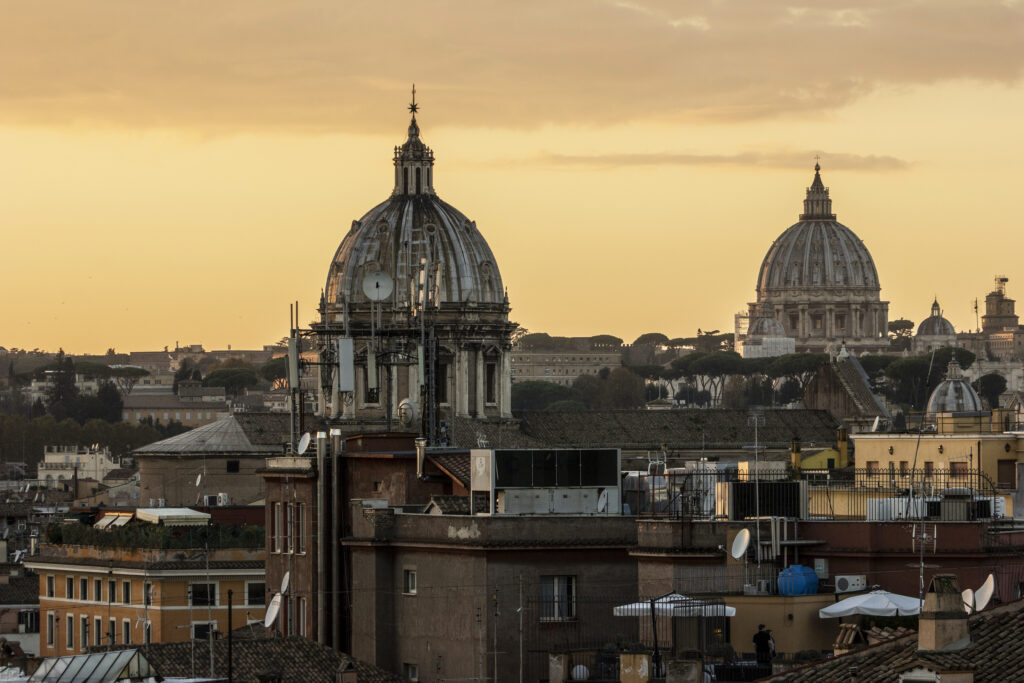Opening a new chapter: The Roma and Europe’s Churches
Opening a new chapter: The Roma and Europe’s Churches
Europe’s churches are seeking to open a new chapter in their relationship with the Roma people. While progress is clear, there remains much to do.
With a population of 12 million people across the continent, the Roma people are Europe’s largest ethnic minority.[1] Although much of the Roma population are Christians, their stories rarely make the headlines about the faith. Yet, in recent years, various Christian denominations have sought to move towards more engaged positions with regard to the Roma people.
Are the Roma religious?
The term ‘Roma’ describes a number of groups and subgroups belonging to the Roma ethnicity. This group represents a minority in many European countries and has often suffered widespread poverty, exclusion, and discrimination.[2]
Academics writing for the Council of Europe in 2020 described how the Roma people are “strong believers” in various faiths, such as Christianity and Islam, but that they “usually do not strictly follow the rituals and practices followed by the non-Romani adherents to that particular religion.” One result of this separation from the mainstream practices has been for the Romani to be historically seen as “heretics and nonbelievers” and therefore they have “not been readily accepted by churches.”[3]
Forgiveness for past wrongs
In order to overcome this historical distancing between the Roma and Christian institutions, in recent years there have been various attempts to foster closer relations. This article will look at three types of policies which have had this aim, starting with an attempt to apologise and recognise the errors of the past.
Perhaps the most notable example of such reflection came from Pope Francis in 2019. During a visit to Romania, the pontiff met with Roma people and asked for forgiveness for “all those times in history when we have discriminated, mistreated or looked askance of you.” These words from the pope were warmly received by Roma people in Romania. Damian Drăghici, a Roma MEP for Romania, called it a “historic moment” and expressed hope that it will help contribute to change people’s attitude towards his people.[4]
Meanwhile, in Sweden, the Church has sought to rebuild relations with the Roma community. This followed a period in which the state, with which the Church is closely linked, actively perpetrated abuses against Roma. A previous EARS article described how, in the aftermath of reports showing how the state had sterilised Roma women between 1934-1976, the Church of Sweden in 2000 held a ‘national reconciliation’ event. Although there were some critics of certain features of the event, it demonstrated an attempt from the Church to play a role in fostering better relations with the Roma.[5]
Adapting to the audience
A second step in improving relations is to aim to create greater engagement with Roma communities. The Church of Sweden, for example, has done this by sponsoring the translation of the denomination’s Common Liturgy Book into four Roma dialects. Other initiatives, such as holding masses in the Roma language and inviting the community to attend, have also been pursued.[6]
Similarly, in Czechia and Slovakia, community outreach has been a key means of seeking to redress the wrongs of the past. In recent years, both countries have been battling with the legacy of sterilisation campaigns forced upon Romani women between the 1960s and which continued until the 2000s. In 2021, Czech senators voted to allow Roma women affected to receive compensation.[7]
In both countries, projects have been undertaken to translate Christian religious texts into local Romani dialects.[8] In Czechia, such translations have been celebrated with events held in churches and promoting Roma traditions and music.[9] Meanwhile, a July 2023 CNE News article reports that in Slovakia the Roma community is currently experiencing a “revival.” While this revival is multi-faceted, the article specifically highlights the role of the Church in helping to strengthen the community.[10]
Aiding the fight against discrimination
These first two examples have looked at the importance of religious institutions reflecting on their past wrongs towards the Roma, and creating initiatives to form deeper bonds between Christianity and the community. However, if we look to the United Kingdom, a third focus has become clear in 2023 – that of actively standing up against discrimination faced by the Roma.
In 2019, the Church of England’s General Synod released a statement which condemned the fact that racism towards Gypsy, Roma, and Traveller (GRT) communities was “tragically” tolerated in the UK.[11]
Yet although the statement explained that the Church wished to combat this problem, by 2023, it seemed this intention had not yet been recognised by GRT people. This was the conclusion of a report by Lord Boateng, the head of the Archbishop of York’s Racial Justice Commission. As part of his report, Boateng conducted interviews with GRT people, during which they expressed that when it came to anti-GRT racism, “the church was not part of the solution, it was part of the problem.”[12]
However, rather than ignore or refute this suggestion, it seems the Church has taken on board this criticism and has sought to take a more active stand in speaking up for GRT people. In June, the Church launched the GRT Friendly Churches programme, which aims to “encourage and signpost churches to do more to welcome people into worshipping communities.” This policy was celebrated by Lord Boateng as a “welcome response” to the “virulent and pervasive racism” faced by GRT people.[13] As part of this policy, senior clergy have attended GRT events, reaffirming their commitment to combatting racism.[14]
This type of active advocacy for GRT people goes beyond simply recognising past errors or aiming to integrate Roma people into the Church, and is an important part of not just be against racism, but actively anti-racist.
A path towards a better future
To conclude, while this article has sought to focus on positive steps taken by European churches to improve relations with Roma communities, it is important to note that this is not a universal experience across the continent. As just one example, Roma activist and scholar Magareta Matache has written that the Orthodox Church must do far more to recognise its role in the historic enslavement of the Roma people.[15]
However, this article has laid out three means through which better relations could be achieved with the Roma – recognition of historic wrongs, community engagement and active anti-discrimination campaigning. It remains to be seen whether these ideas will be maintained and even expanded on in the coming years.
Interested in similar topics? Go to our Dashboard to learn more.
Sources
[1] Roma equality, inclusion and participation in the EU.
[2] Roma people in Europe – Fundación Secretariado Gitano
[4] Pope Francis apologises to Roma for Catholic discrimination – BBC News
[5] Inclusion on whose terms? The Church of Sweden and the Roma minority in Sweden
[6] Inclusion on whose terms? The Church of Sweden and the Roma minority in Sweden
[7] The shameful story of Roma women’s forced sterilisation in central Europe | Euronews
[8] In Czech Republic, Adventists Publish New Testament in Romani
[9] In Czech Republic, Adventists Publish New Testament in Romani
[10] Slovakia: Revival among the Roma
[11] General Synod speaks out against racism directed against Gypsy, Roma and Traveller communities | The Church of England
[12] General Synod speaks out against racism directed against Gypsy, Roma and Traveller communities | The Church of England
[13] Archbishops welcome Gypsy, Roma and Traveller Friendly Churches initiative
[14] Archbishop of York rides a horse-drawn carriage around Appleby fair as he meets travellers | Daily Mail Online






